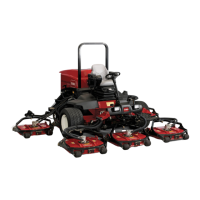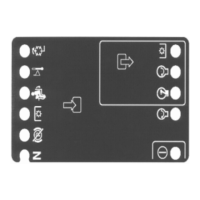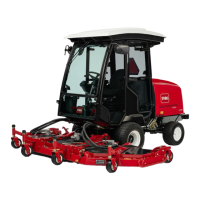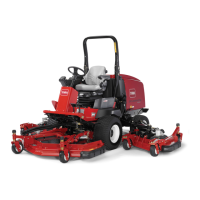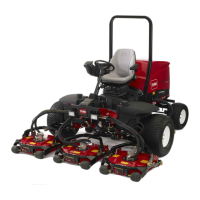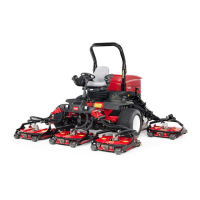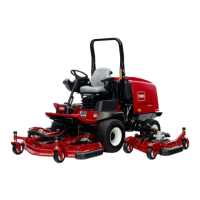37
Adjusting Rear Wheel Toe-In
After every 800 operating hours or annually, check rear
wheel toe-in.
Measure center-to-center distance (at axle height) at front
and rear of steering tires. Front and rear measurements
must be within 1/8 in. (3 mm) of each other.
Adjusting 2-Wheel Drive Models
1. Loosen clamps at both ends of tie rods (Fig. 57).
2. Rotate tie rod to move front of tire inward or outward.
3. Tighten tie rod clamps when adjustment is correct.
1
Figure 57
1. Tie rod clamps
Adjusting 4-Wheel Drive Models
1. Remove cotter pin and nut securing one of the tie rod
ball joints to steering arm. Remove ball joint from
steering arm.
2. Loosen clamp securing ball joint to tie rod (Fig. 58).
3. Rotate ball joint one revolution and re-install to steering
arm.
4. Inspect toe-in and repeat adjustment as required.
5. Tighten clamp securing ball joint to tie rod.
6. Torque ball joint nut to 40 ft.-lb. (55 N⋅m) and install
cotter pin.
1
Figure 58
1. Tie rod clamps
Adjusting the Service Brakes
Adjust the service brakes when there is more than 1-1/2 in.
(3.8 cm) of “free travel” of the brake pedal, or when the
brakes do not work effectively. Free travel is the distance
the brake pedal moves before braking resistance is felt.
To reduce free travel of brake pedals, tighten nut on brake
rod adjuster (Fig. 59), 1/2 turn at a time, until desired “free
play” in pedal is achieved.
1
Figure 59
1. Brake rod adjuster
Adjusting the PTO Belt
Re-tension PTO belt initially after the first 10 hours of
operation; thereafter, check condition and tension of belt
every 200 hours. It is recommended that belt be replaced
after every 1500 hours of operation.
Important Mis-adjusted clutches will slip and generate
excessive heat (blueing) resulting in failure.
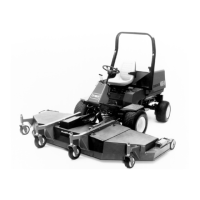
